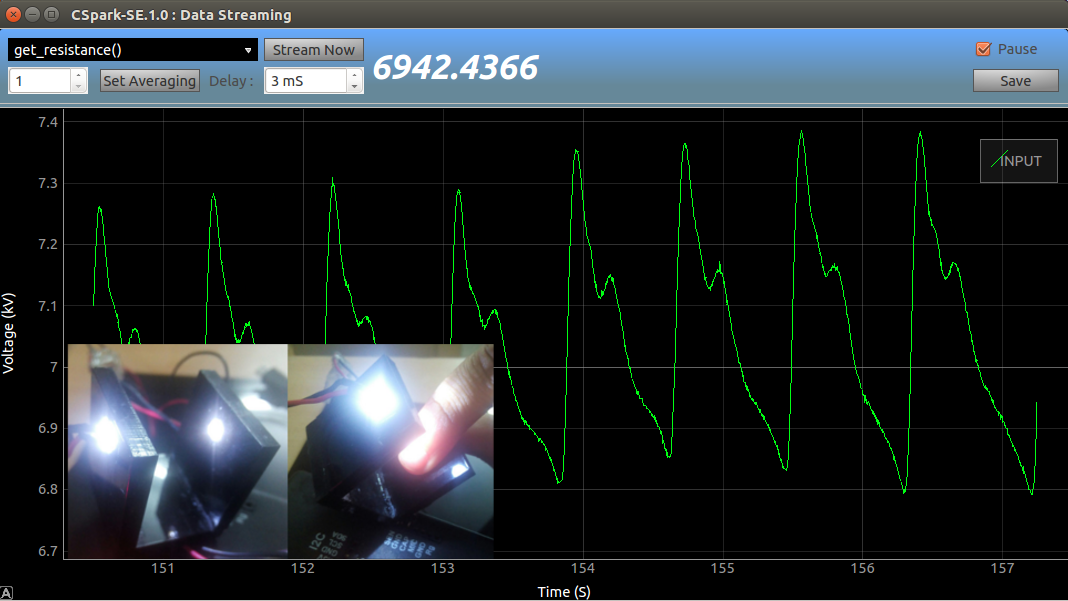How to make a pulse sensor with a phototransistor, and a bright LED.
The SEN input of the SEELablet is connected to a 12-bit voltmeter, and is also connected internally to 3.3V via a 5.1Kohm resistor. A photo-transistor connected between SEN and GND can be used to measure the amount of incident light.
In order to measure and visualize heartbeats, place a finger placed between a bright light source and the phototransistor, such that the light has to pass through the finger to get to the phototransistor. The body's pulse causes the opacity of the finger to change momentarily, and this is reflected in the amount of light received by the sensor.
In order to record these fluctuations , open the data streaming utility , and set the command to 'get_resistance()' . This will start plotting the resistance of the phototransistor as a function of time

The phototransistor was connected to the SEN input, and its resistance was plotted against time. To do this with a regular voltmeter, simply pull-up the phototransistor's collector to the supply voltage via an appropriate resistor (5K1), and monitor the collector voltage.
A bright light source was aimed at it with a finger placed between the two, such that the light has to pass through the finger to get to the phototransistor. The body's pulse causes the opacity of the finger to change, and this is reflected in the amount of light received by the sensor.

 Jithin
Jithin
Discussions
Become a Hackaday.io Member
Create an account to leave a comment. Already have an account? Log In.